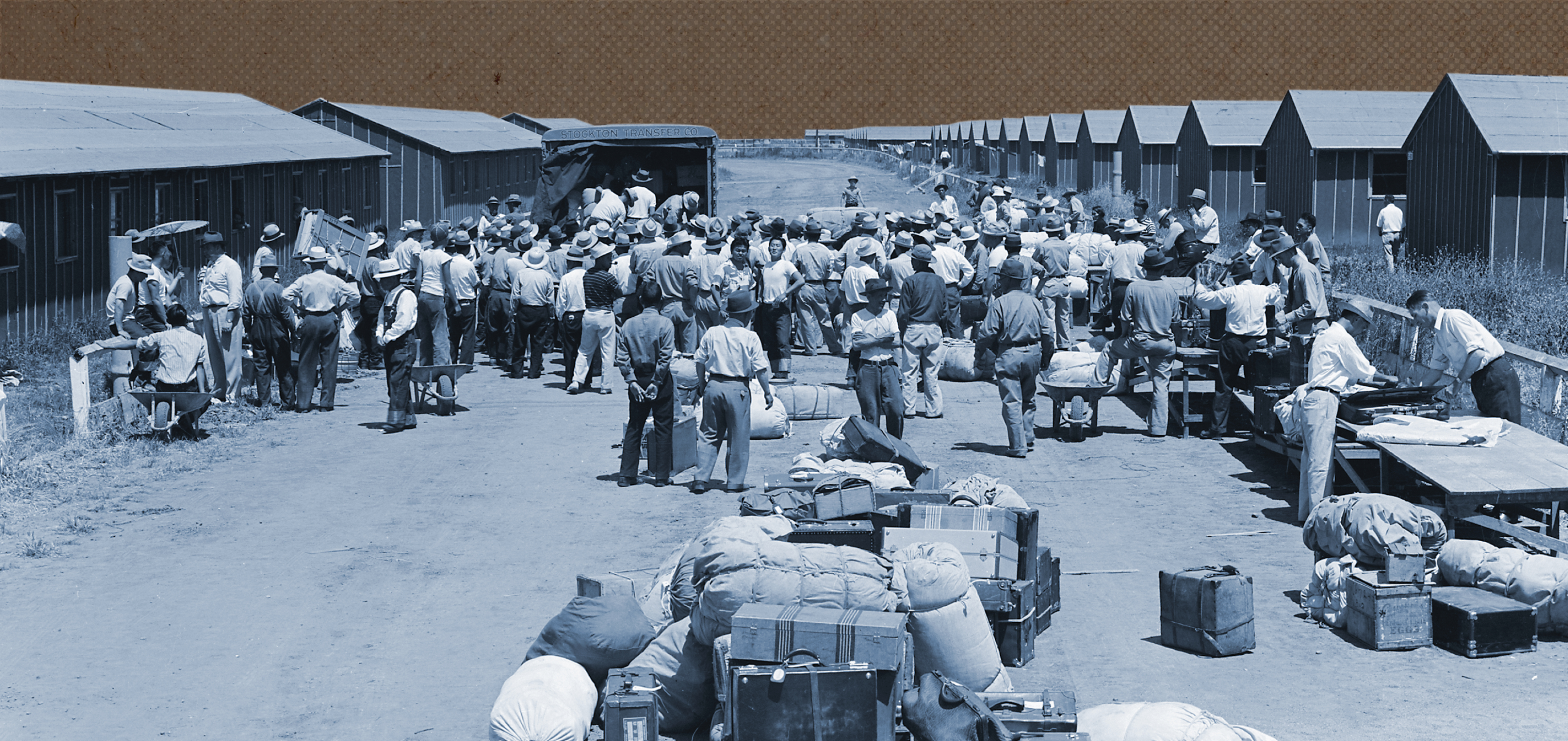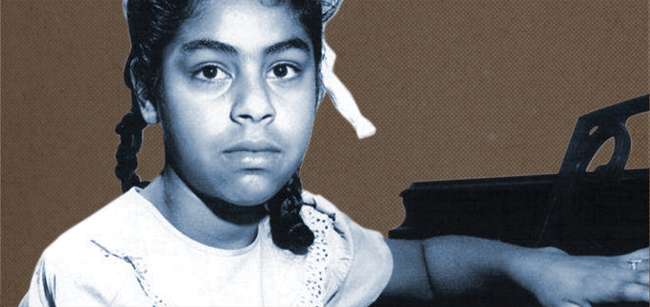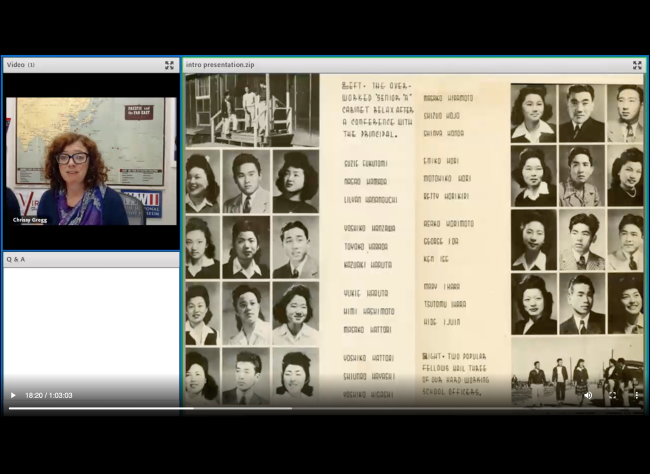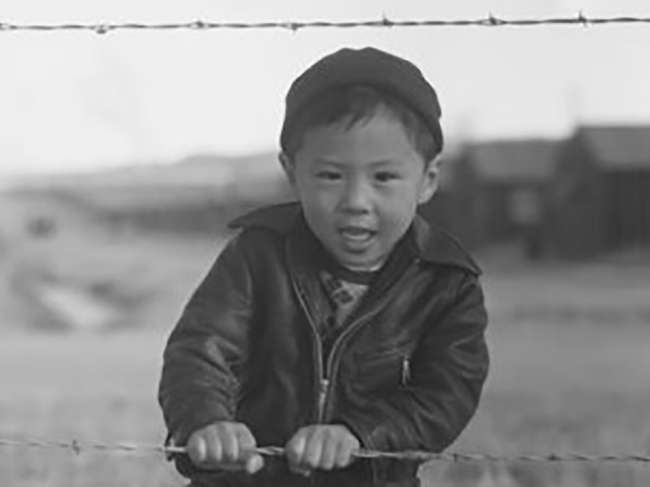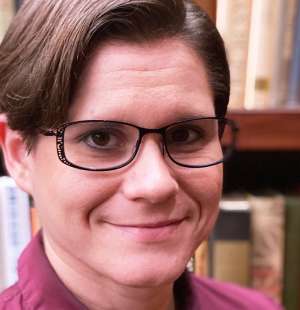Listen: Apple Podcasts, Spotify.
About the Episode
Rising racial tensions on the west coast of the United States came to a head after the surprise attack on Pearl Harbor, and a mandatory forced evacuation was carried out, sending Japanese Americans to incarceration camps. The event echoed for decades afterwards across multiple presidential administrations in the courts, politics, and minds of those wrongfully incarcerated.
In this week’s episode, hosted by Dr. Kristen Burton and written by Digital Content Manager Bert Hidalgo, we delve into the ramifications of signing Executive Order 9066 in 1942. Racially motivated General John DeWitt created Military Zones that initiated the mandatory evacuation of Japanese Americans to Assembly Centers and finally to Relocation camps. At breakneck pace, Japanese Americans found themselves taken from their communities and farms in California to live in cramped barracks far away from the homes they knew. While camps began to close after the Supreme Court handed down Ex parte Endo in 1944, which stated that the War Relocation Authority had no right to incarcerate loyal civilians, the last camp would not close until March 20, 1946. What followed was a decades-long redress movement that was successful in passing the Civil Liberties Act of 1988 and the Civil Liberties Amendment of 1992.
The title of this week's episode, 33 months, refers to the average length of time that most incarcerees spent behind barbed wire. For many, life would never be the same and new challenges arose for years after the war ended. This is a chapter in American history that should not be forgotten, and continues to be taught and analyzed 75 years later.
Select music for this episode was provided by Kevin MacLeod.
Topics Covered in this Episode:
- Executive Order 9066 and Japanese American Incarceration
- The Attack on Pearl Harbor on December 7, 1941
- Civil Liberties Act of 1988
- Former Secretary of Transportation Norman Mineta and Former Senator Daniel Inouye
- The 442nd Infantry Regiment and the 100th Infantry Battalion
Featured Historian
Karen Leong, PhD
Karen Leong, PhD is an associate professor of women and gender studies and Asian Pacific American studies in the School of Social Transformation at Arizona State University. She earned her graduate degree from the University of California-Berkeley. In all aspects of Leong's scholarship research, teaching, and community engagement, she explores the overlapping and mutually reinforcing discourses of gender, race, class, and nation, and how these discourses have advantaged some and disadvantaged others in United States society. In her teaching and research, she focuses on United States cultural and social history with an emphasis on women's experiences, the development and shifting of gender ideologies, racial identity formation, immigration policy and the formation of national identities. Her book, The China Mystique: Pearl S. Buck, Anna May Wong, Mayling Soong Chiang and the Transformation of American Orientalism was published by the University of California Press in spring 2005. She is currently working with JACL Arizona and members of the Japanese American community on an oral history project about Japanese Americans in Arizona.
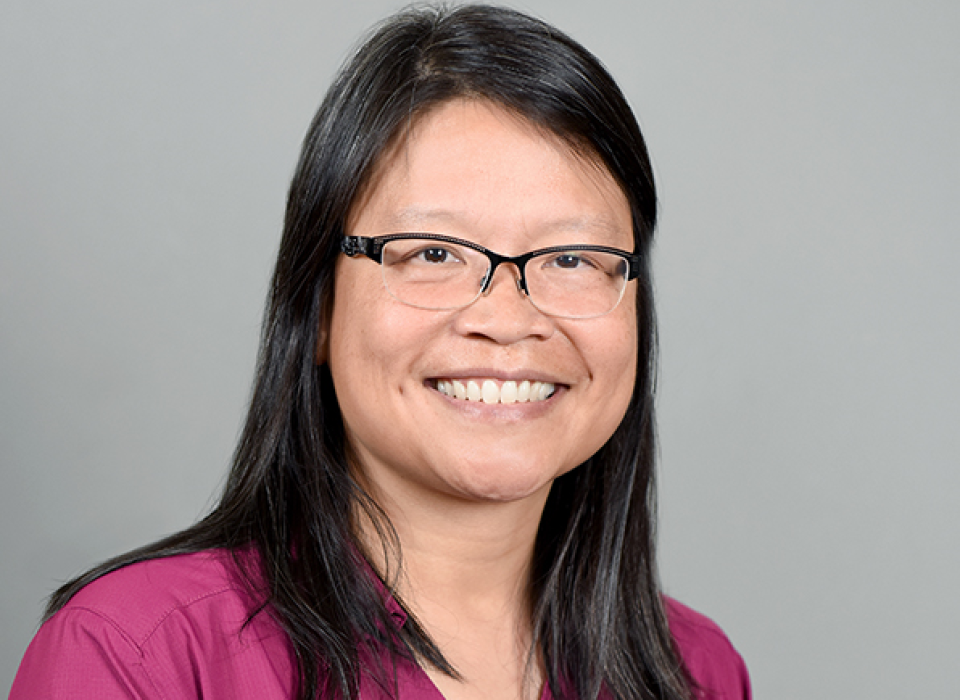
Related Content
-
Episode 8 – The Temper of the Courts
During World War II, Sylvia Mendez and her family began a court battle that would culminate in ending legal segregation in California. This landmark case would later be used to help justify the "separate is unequal" ruling in the Brown v. Board of Education case, which ultimately overturned the 1896 Plessy v. Ferguson ruling that made "separate but equal" the law of the land.
-
Japanese American Experiences in WWII Webinar
In this webinar, students will learn about the forced incarceration of Japanese and Japanese Americans in remote camps for the duration of WWII, especially focused on the experiences of Nisei students who abruptly became prisoners at a young age.
-
Article Type
Japanese American Incarceration Education Resources
The Museum highlights educational resources for teachers and students that can be used to explore Japanese American incarceration.
-
Contributor
Kristen D. Burton, PhD
Kristen D. Burton is the Teacher Programs and Curriculum Specialist at The National WWII Museum in New Orleans, LA.
Sponsors
"To the Best of My Ability" is part of an ongoing series commemorating the 75th Anniversary of the End of World War II made possible by The Nierenberg Family.
Transcript
Archival Audio - Interview of Dillon S. Meyer on the Relocation of Japanese Americans
Well I don’t care if you have mansions to live in or Beauty Rest mattress to sleep on, ice cream, cake, and coffee. Three meals a day. If you’re penned up it just doesn’t seem right.
I agree. But public opinion feeding on prejudice and fanned by hatred and fear of the unknown will do some peculiar things especially in wartime. Even though the war relocation authority is responsible for the operation of the relocation centers, we’re convinced they’re not good things. It is not a normal way of life, and it produces many kinds of abnormal conditions that are not normal.
Dr. Kristen Burton
On March 20, 1946, the Truman administration closed the last of what were known as “War Relocation Centers.”. These incarceration camps, which were hastily built and opened in the months after the Pearl Harbor attack, were the result of Executive Order 9066 signed by President Roosevelt, which would lead to the mandatory evacuation for most Japanese Americans and immigrants to relocation centers.
The relocation centers, located in remote areas in California, Utah, Arizona, Idaho, Wyoming, Colorado and Arkansas were sparsely furnished. Incarcerees endured poorly insulated sleeping barracks during months of extreme heat in the summer and frigid temperatures in the winter evenings, inadequate schooling for children, and many were routinely questioned on their loyalty to the United States.
After the war, many incarcerees faced the brutal reality of losing everything they had earned: businesses, farms, careers, and homes were no longer there to return to, and the racism they endured during the war continued long after V-J Day.
While justice would be delayed and denied, a series of legislative victories led to The Commission on Wartime Relocation and Internment of Citizens, which ultimately led to the passing of the Civil Liberties Act of 1988.
The redress movement, which sought justice for what was done to Americans of Japanese descent during the war, would span four presidents and come at the toil of those incarcerated.
Archival Audio - Truman Taking the Oath of Office
“I Harry S. Truman do solemnly swear to faithfully execute the Office of President of the United States, and will to the best of my ability, preserve, protect and defend the Constitution of the United States, so help me God.”
Dr. Kristen Burton
You’re listening to “To the Best of My Ability: The Postwar Years” from The National WWII Museum in New Orleans. This is episode 9, “33 Months.” I’m your host, Dr. Kristen Burton. This week, Tule Lake became the last war relocation center to close down after the war.
Joining us is Dr. Karen Leong, Associate Professor of Asian Pacific American Studies at Arizona State University and co-coordinator of the Japanese American Internment in Arizona Oral History Project.
Our story begins during the first wave of mass migration into the United States from Japan.
Dr. Karen Leong
It's important to remember that the recruitment of Japanese labor to the United States happened when the supply of Chinese labor was sort of cut off with the Chinese Exclusion Act of 1882. And as Japanese were recruited to fulfill labor needs, they also inherited the existing anti-Asian sentiment and racism in the United States. So, many of them were coming from Hawaii, which is where many of them initially migrated, although some came directly to California and the western states when increased migration happened. But there was ongoing anti-Asian racism, and we see this in 1907 with the Gentlemen's Agreement between Teddy Roosevelt and Japan, where it was called the Gentlemen's Agreement, as opposed to Chinese exclusion because Japan had shown its military might in defeating Russia in 1905.
Dr. Kristen Burton
The Gentlemen’s agreement of 1907 was an informal agreement between president Theodore Roosevelt and the Empire of Japan whereby Japan would not issue passports to citizens wishing to emigrate to the United States, and in turn the U.S. would not impose restrictions on Japanese immigrants, like it had with China with the Chinese Exclusion Act.
This agreement was created to placate the Empire of Japan, emboldened after defeating Russia during the Russo-Japanese War.
The 1907 agreement stopped the pot from boiling over, but it did not solve racial tensions from continuing to brew in California.
Dr. Karen Leong
A lot of the farms, strawberry farms, were started by Japanese immigrant farmers, and their success, again, led to further economic competition and resentment. And that is why the Alien Land Law was first introduced in California, building upon the anti-Asian sentiment and politicization, which did not allow Asians to become naturalized citizens. Any alien could not own land in their own name. That meant that only those children born to the immigrants who had birthright US citizenship would have the ability to own land. California was an innovator in anti-Asian legislation, and it was followed up by many other western states in so many of the western states had these anti Alien Land Laws. They called them—many of these western states had Alien Land Laws similar to those passed in California.
Dr. Kristen Burton
Then on December 7, 1941, a surprise attack on the United States stunned the nation and the globe, and made war with Japan inevitable.
Archival Audio - News Flash Describing the Japanese Attack on Pearl Harbor
We have witnessed this morning [indiscernible] of Pearl Harbor and the severe bombing of Pearl Harbor by enemy planes undoubtedly Japanese. The City of Honolulu has also been attacked and considerable damage done. This battle has been going on for nearly three hours. One of the bombs dropped within 50 feet of KGU towers. It is no joke, it is a real war.
Dr. Kristen Burton
The Japanese attack on Pearl Harbor commenced on 7:53 AM Hawaii Standard Time. By 8:00 AM a majority of U.S. fighter planes had been destroyed. 2,403 Americans lost their lives during the battle, with an additional 1,178 wounded. The attack was devastating, Japan continued its barrage on the U.S. and Britain by also attacking the Philippines, Guam, Midway Island, Malaya, and Hong Kong.
President Roosevelt spent his afternoon preparing a speech for Congress, where he would ask that the United States go to war.
Archival Audio - FDR Declares War 1941
Yesterday, December 7, 1941. A date which will live in infamy. The United States of America was suddenly and deliberately attacked by naval and air forces of the Empire of Japan.
Dr. Karen Leong
That led to a wave of fear, and that was understandable. The United States had not been attacked by a “foreign power” for a long time.
The hysteria especially was pointed at Japanese immigrant communities and Japanese Americans, and part of this was because they were not of European descent. They were more obviously foreign because they weren't necessarily Christian, although many Japanese Americans at this point were Christian. They were even Christian before they came to the United States due to missionary influence, some of them. And they were seen—because of this ongoing anti-Asian sentiment, this idea that only people of European descent could truly become American, there was already antipathy against people of Japanese descent.
Dr. Kristen Burton
The evacuation order was carried out by the Military Commander of the Western division, General John Dewitt. Dewitt had a troubled position on Japanese Americans once saying “A Jap is a Jap. A piece of paper cannot change that.” Racist proclamations like that showed an obvious bias on his role in the evacuation.
Dr. Karen Leong
Economically, there was also competition with these Japanese American farmers from European-American farmers, and there was resentment, racial resentment because of that as well. So this racial resentment plus this understandable fear combined to lead to pressure on the federal government. And by February 19, 1942, we see Franklin Delano Roosevelt and his administration deciding that they must do something to remove potential enemy aliens from particular military zones. There was no actual national security reason for this. FBI Director J. Edgar Hoover, who most of us know was a very paranoid man, had already told the administration, “We've already rounded up any suspicious immigrant leaders.” But the public perception is what really contributed to Executive Order 9066. Now, Executive Order 9066 did not specify people of Japanese descent. It was an order that said any persons could be removed from military areas designated by the military. Any commander designated by the Secretary of War or the Secretary of War could designate these military areas from which any person could be removed.
And they put out evacuation notices, often giving no more than a week for Japanese Americans to gather their belongings, assemble at particular places where busses would pick them up, and take them to assembly centers. Assembly centers were hastily put together in large areas like fairgrounds or racetracks. Famously, there was a number of places where horses were kept, and that became the housing temporarily at these assembly centers.
Dr. Kristen Burton
Walter Imahara was just 5 years old when his family was forced from their home and sent to Fresno Assembly center, then to Jerome, and finally to the Rohwer War Relocation Center in Arkansas.
Oral History - Walter Imahara
Overnight the business was finished. Lost all the land, the crops that were on the land, you had to leave in a short period… And of course no one would purchase the land, or your crops, or your equipment because they knew you’re leaving. Okay. But there’s all kind of horror stories about… But the neighbors are the ones that picked up the mortgage on the property. Okay. We talking about 120,000 plus [indiscernible] on the west coast. There’s stories, we talked to one person that was leaving to go to camp. Okay. And they looked back at their home, as they got on the truck to go to camp, and there were people, neighbors, already in the house. Taking out the furniture.
Dr. Kristen Burton
On March 18, 1942, Executive Order 9102 was signed, creating the War Relocation Authority, a civilian agency responsible for the relocation centers.
Milton S. Eisenhower was assigned the director of the WRA, but he opposed the idea of its purpose and creation, writing to the Secretary of Agriculture Claude Wickard, “when the war is over and we consider calmly this unprecedented migration of 120,000 people, we as Americans are going to regret the unavoidable injustices that we may have done.”
Dr. Karen Leong
So, in terms of the civilian camps, there were ten of them, and they were in remote areas. They usually were near a train. They had to have access to transport thousands of people.
One of the most common terms used to describe these camps was “dusty.” They were in these areas, again, that were not agriculturally developed because that'd be too valuable land, and they were expecting the Japanese American farmers. They were known to be really good at farming for what they did in the western states. They were expecting them to develop this land as agriculture. So often, they were—they had these army-size barracks that were divided into different spaces for families. There could be up to six families per barracks. There wasn't enough wood necessarily at the time, so it was often greenwood, and there were cracks in the barracks, so the dust and the cold would get in. Some of these places had very fierce winters, and it was very desolate to many people.
They had bathroom blocks where they had these like large bathroom blocks, and there were not individual stalls. And the Japanese American women were mortified, you know. How would they use the bathroom without privacy? New mothers, they were—they didn't know what to do. They were embarrassed. Masa Fukuchi, who had a newborn when she first went to the assembly centers, when she arrived at Gila River, she recalled having to wake up before anyone else woke up to wash the diapers in these washroom/restroom areas. And so it was hard. There was an adjustment for everyone because suddenly, they went from living—many went from living on isolated farmhouses or farm areas to being crammed together in these large barracks with no privacy. Newlyweds had no privacy. People talked about creating barriers with blankets. People would get scrap wood and try to build furniture because they were given straw for mattresses and a sack to fill it with. They had one light bulb in the whole barrack. So there was some electricity. There was some running water.
Dr. Kristen Burton
Issei referred to first generation Japanese immigrants, the majority of whom arrived in the United States between 1885 and 1924, but because of immigration laws, they were never allowed to be naturalized. Regardless, many of these immigrants considered the United States their home.
Nisei was the second generation who were American citizens by birthright. They were ethnically targeted the same as Issei.
In 1943 incarcerees were given a questionnaire, initially for Nisei men who could serve. The questionnaire, designed as a loyalty oath, asked to swear allegiance to the United States. Later the questionnaire was expanded to all adult incarcerees. This was a slap to the face for many civilians who never wavered their loyalty to the U.S.
Many incarcerees were confused or afraid to answer the questionnaire, specifically questions 27 - “Are you willing to serve in the armed forces of the United States on combat duty, wherever ordered?” and question 28 - “Will you swear unqualified allegiances to the United States of America and faithfully defend the United States from any or all attack by foreign or domestic forces, and forswear any form of allegiance or obedience to the Japanese emperor, or other foreign government, power or organization?”
Answers to these questions had major consequences, like being sent to the maximum security segregation center in Tule Lake, and also placed a mental toll on Japanese Americans.
Dr. Karen Leong
Racism is a very expensive proposition in the United States, even though unfree labor has also helped the infrastructure of the United States. So they were planning to close these camps, and most of them, they would all be closed by 1946. But some were allowed to leave the camps before then as a part of the War Relocation Authority. That's a civilian agency running the camps’ relocation program. And the idea was that they would screen families or individuals and make sure they weren't a security risk, which most of them evidently knew were not at all because none of them actually had any charges against them. And they would be sent to different cities outside of the military zone. So that usually meant the Midwest or the eastern United States or the southern United States.
And at the beginning, many of them, in 1943, were going to cities with industries where they needed, again, more workers because of the wartime shortage of workers. So we're talking about places like Detroit. We're talking about places like Chicago. And they’re places, again, with factories and so forth. And they had to find places that would hire Japanese Americans because they had justified the need to remove the Japanese Americans as disloyal, and now, they had to prove they were loyal so that they would hire them and get them out of the camps. So it's really sort of funny in a not very funny way how the US government had to both—had to prove the Japanese Americans were loyal when they needed them to leave the camps.
And so we see them trying to develop this structure of support. And then, they would have to then recruit Japanese Americans to leave the camps after the Japanese Americans already saw the racism, and the hatred, and the hysteria. And why would they want to leave the camps if they were going to face that? And on top of that, they were advised, when you leave the camps, don't hang out with other Japanese Americans because you don't want to raise suspicions.
The WRA had kept sending people to California, and they kept coming back. The staff members kept saying, “No, the governors are threatening violence against them. There's so much extra legal violence against them in California.” This was not just racism. It was racism plus economic competition. And so they were not advised to return to California. In fact, most Japanese Americans did not return to California, where most of them came from, until well after a year or two of the closing of the camps.
Dr. Kristen Burton
In 1948,Truman signed the Claims Act. This was an attempt to allow those who were forcibly evacuated to recoup losses, but required documented proof of loss. For many there were no receipts and if they did have documentation, it was long gone in the wake of quickly evacuating. Less than 24,000 individuals filed a claim from the roughly 120,000 incarcerated. A majority of claimants accepted an offer from the government to quickly get something. Either $2,500 or three fourths of their claim, whichever was smaller.
The Claims Act was supported by the Japanese American Citizens League (JACL), who by the late 1970s was about to become a center point for the redress movement.
Dr. Karen Leong
The Commission on Wartime Relocation and Internment of Citizens began in 1980. And there was already—even—so between 1946, when the last camp closed, to the late 1970s, there was a lot of silence, and the JACL, for example, had a lot of division about whether to address what happened. And already the JACL had some controversy about it because there were groups of people who felt the JACL was too willing to work with the government and tell Japanese Americans we must go to the camps and cooperate with the government. People who were—remember that time and oral histories have said that they were told if they didn't do this, there would be violence against their community. And they felt they had to do this. Otherwise, people would be hurt and killed because they were warned as such by the federal government. I have not seen any documentation of this, but this is from oral histories of people who were Nisei and who were approached by some of the federal agents at the time when they were talking about the initial evacuation or what they called evacuation of Japanese Americans from places like LA or the Central Valley.
So Norman Mineta, who was a senator from San Jose, he shared his own experience of the removal, and he was good friends with Alan Simpson, who also happened to be a senator at the time, who was a Republican. And together, they were able to push through this bipartisan legislation because Alan Simpson and Mineta were really good friends.
Dr. Kristen Burton
Mineta and Simpson were lifelong friends, having met in Heart Mountain relocation center when a local Wyoming boy scout troop accepted an invitation by the Japanese American boy scouts in camp.
Former Congressman Simpson’s experience at the camp stood with him throughout his life and helped him decide to assist Mineta and also considering the legacy of the 100th Infantry Battalion and the 442nd Infantry Regiment.
About 1,500 Nisei men volunteered to serve and would go to participate in the 442nd Infantry Regiment. Which later would be recognized as the most decorated unit for its size in military history.
Dr. Karen Leong
And he knew that there were these veterans that had fought really hard. And so this idea of patriotism, of the 442nd and the 100th, the “Go For Broke” battalion, they were—that idea of fighting to prove your loyalty helped spur this legislation through Congress, and it set up this commission to investigate the removal of Japanese Americans during World War II, and eventually expanded to include the displacement and dispossession of the Aleuts in Alaska by the military as well. And this resulted in hearings across the nation. I believe there is like twenty hearings in twenty different cities. And this is like the first time collectively Japanese Americans—and they had to be persuaded; many of them had to be persuaded—testified about their experiences, about their losses, about the trauma, and it became part of the record.
It also led to this report, “Personal Justice Denied,” that said, in fact, it was wrong to remove US citizens without any evidence of wrongdoing, without any specific charges. It said that throughout the war, the claim had been that it was military necessity. The research showed that it was not military necessity, but it was actually, again, this wartime hysteria, racial prejudice, and a lack of political leadership that resulted in this massive unconstitutional act.
And that actually led to the Civil Liberties Act of 1988. That was then passed on the recommendation of the commission. And that provided for the formal US apology. Ronald Reagan signed that into law. George H.W. Bush is the one who issued the formal apology.
Dr. Kristen Burton
On September 27, 1992, after decades of fighting for justice, the Civil Liberties Act Amendments of 1992 was signed into law by President Bush, promising all remaining internees $20,000 and official apology.
Dr. Karen Leong
Many of the Nisei who experienced Japanese American incarceration during World War II, who had their freedoms arbitrarily taken away, for them, this really developed a critical consciousness about how the United States works. We see that in Yuri Kochiyama, who became this amazing human rights person who fought for Puerto Rico recognition, who is actually the person—she was a member of the Black Panthers. She's the one who actually crawled up on stage and cradled Malcolm X's head when he was assassinated. She took her critical awareness about how the US democracy is not democratic for all and really sought to expand those rights. Edison Uno, Sue Kunitomi Embrey are also other amazing activists who emerged out of this crucible of freedom—realizing that freedom cannot be taken for granted, that democracy is meant to be just for everyone.
Dr. Kristen Burton
Senator Daniel Inyoue, a key figure in the redress movement and veteran who served in the 442nd Infantry Regiment during WWII, sums up the lessons for a nation who committed these acts through the lens of a Japanese American who lived through that time period.
Oral History - Daniel Inouye
This country moves forward.
What would you say to America’s youth today based on your experience?
You’re very fortunate. You live in a great country. We make mistakes but this country acknowledges mistakes. It’s not easy but we do it. We also have opportunities. Now you would look at me and say “you’ll never be majority leader or chairman of the appropriation's committee” but here I am.
Here you are. Are you optimistic about the future?
Very. Sure these times I’ve gone through, well, since 1959 I’ve seen ups and downs of this congress, but we always move forward. And. We don’t repeat this every day, but there are 33 words that are very sacred to all of us. We do the repetition a little differently but “We hold these truths to be self-evident. That all men are created equal. That they are endowed by their creator certain inalienable rights. That among these are life, liberty, and the pursuit of happiness.” It’s operational. Believe me.
Dr. Kristen Burton
From The National WWII Museum, I’m Dr. Kristen Burton and this has been season two of “To the Best of My Ability.”
This finale episode was written by Digital Content Manager Bert Hidalgo, who also did the sound mixing. Archival audio is courtesy of The National Archives and Records Administration. Oral history segments are from the Digital Collections of The National WWII Museum, and can be viewed online in their entirety at ww2online.org
Our thanks to Dr. Jason Dawsey, Dr. Daniel Swift, Gemma Birnbaum, Dr. Rob Citino, Richard Frank, Dr. Matthew Delmont, Nannette Regua, and Dr. Karen Leong for their contributions this season. Special thanks to the Harry S. Truman Library, whose digital resources allowed us to continue production during the Covid-19 pandemic.
If you like this podcast, please rate and review us on your favorite podcast platform. Reviews are important to help others find the series. "To the Best of My Ability" is part of an ongoing series of programs commemorating the 75th Anniversary of the End of World War II made possible by The Nierenberg Family.
